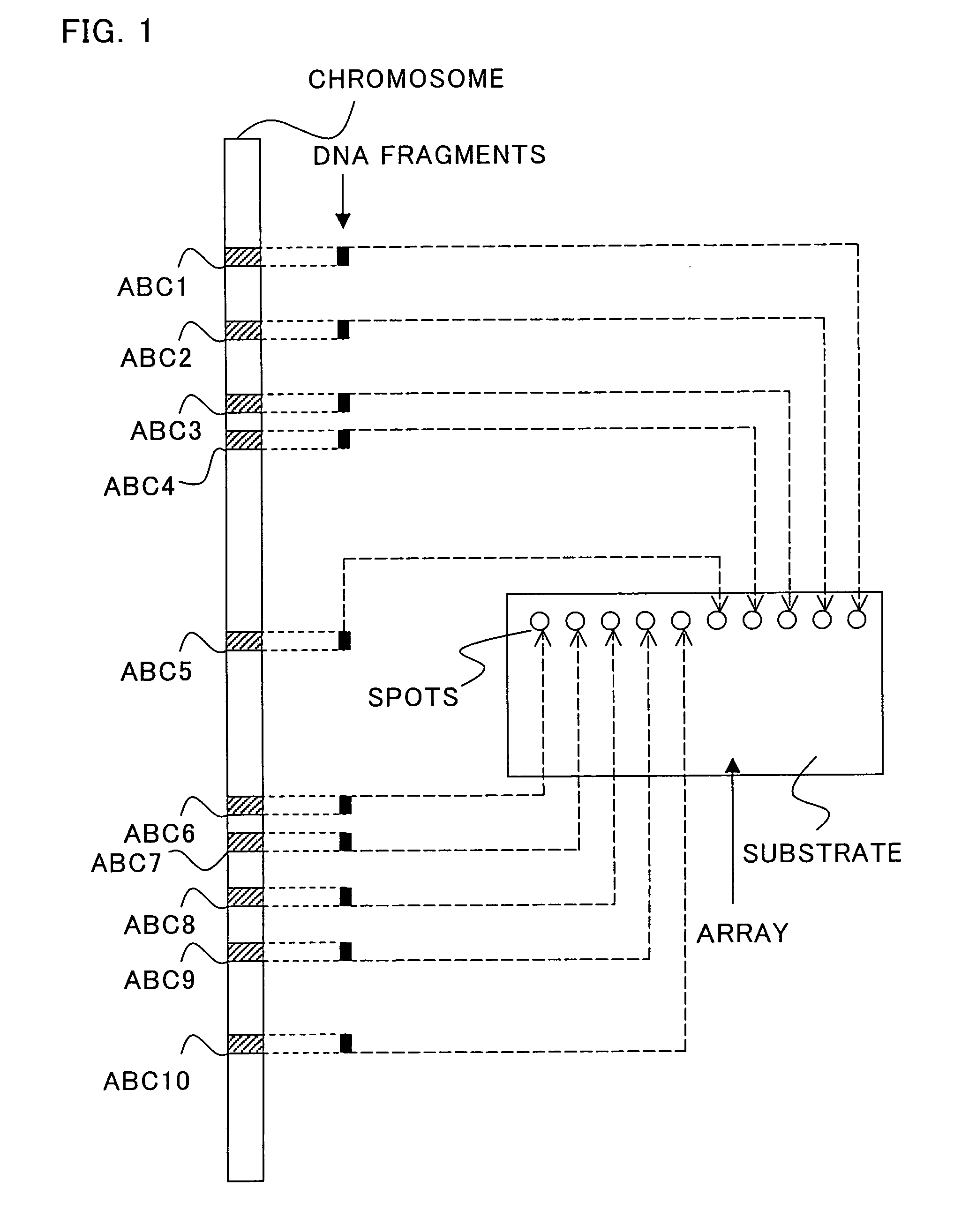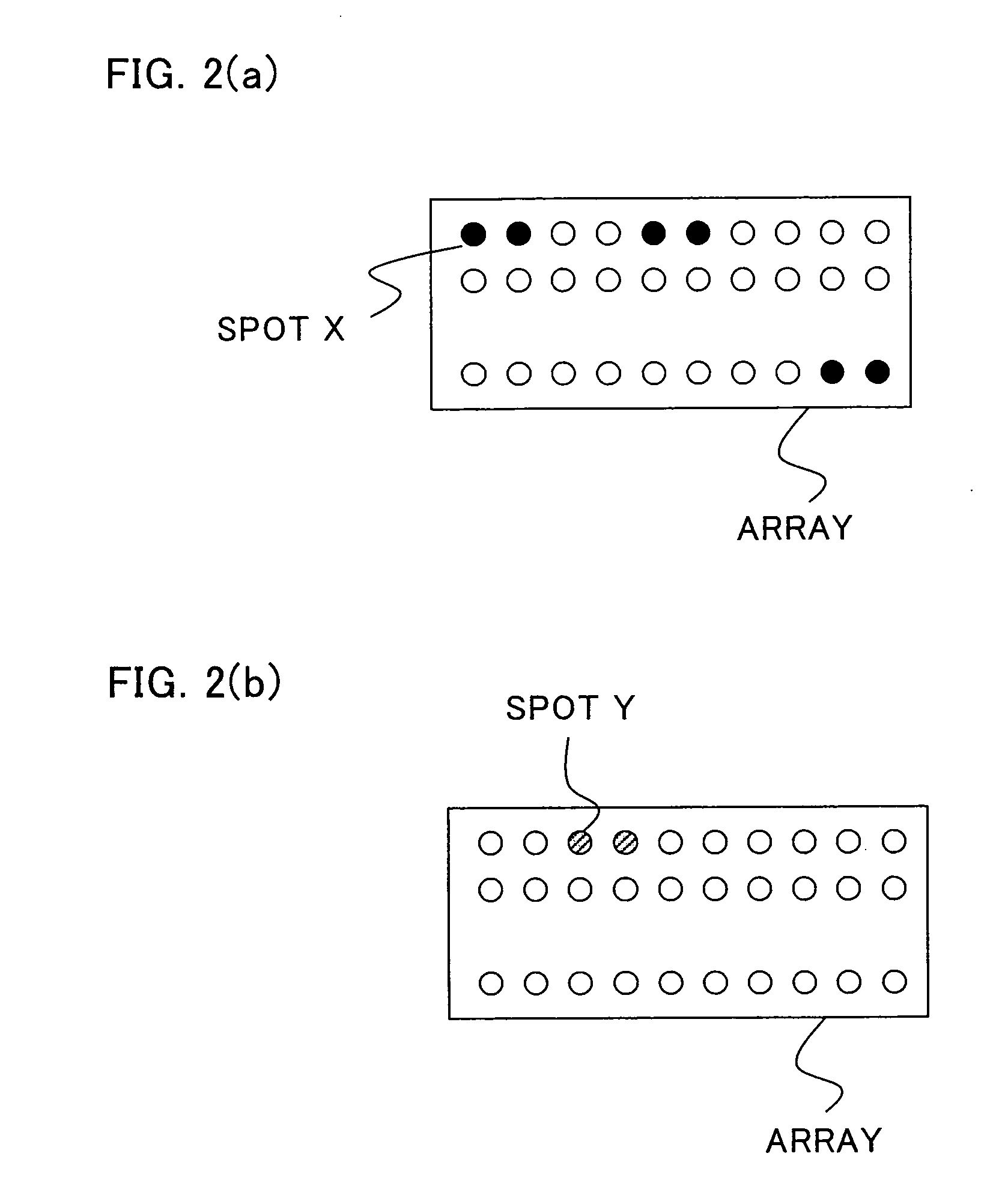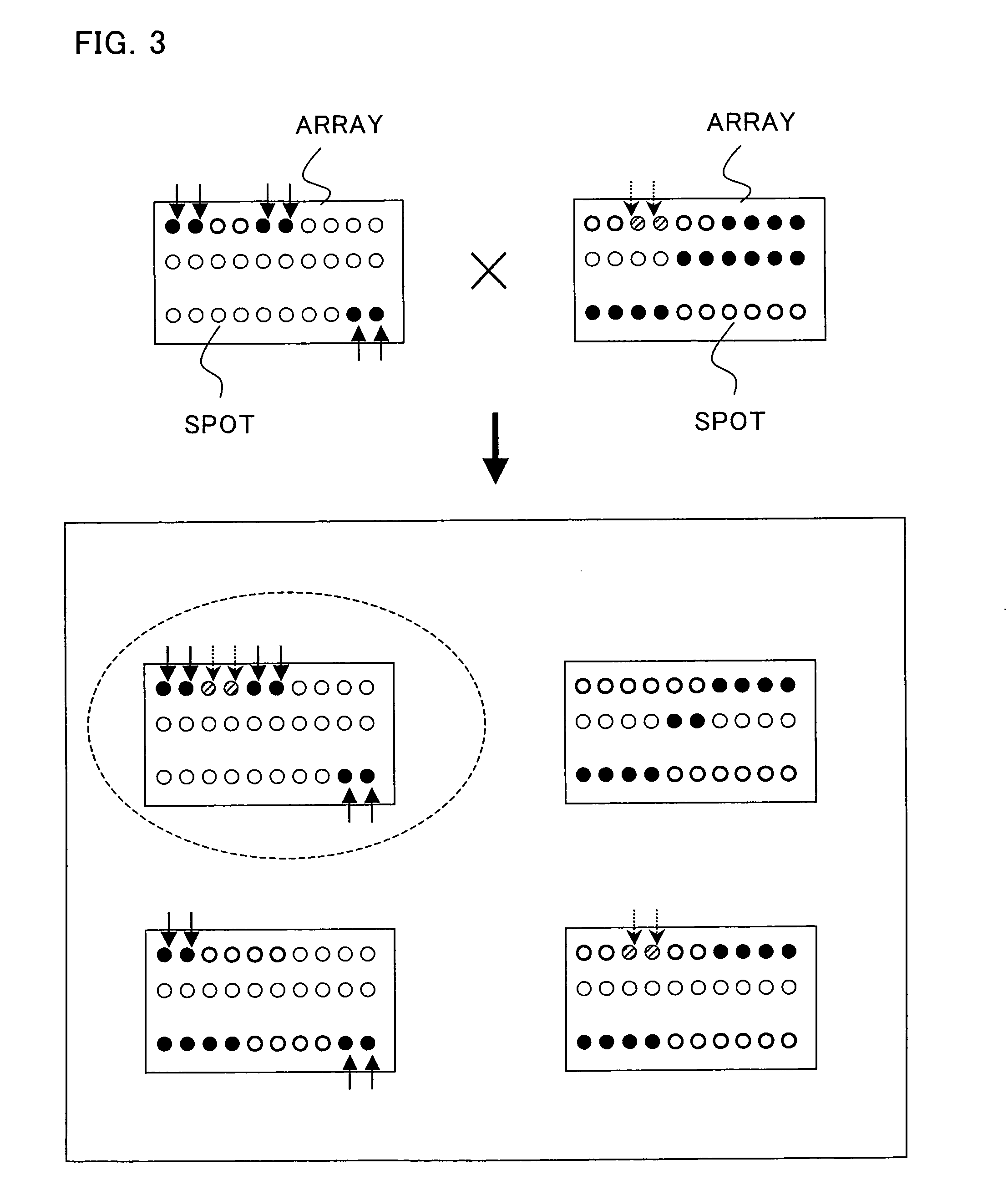Array having substances fixed on support arranged with chromosomal order or sequence position information added thereto, process for producing the same, analytical system using the array and use of these
a technology of array, which is applied in the field of array having substances fixed on the support arranged with chromosomal order or sequence position information added thereto, process for producing the same, analytical system using array and use of these, etc., can solve the problems of inability to manually process the gene expression data obtained from the nucleic acid array, inability to achieve customer acceptance, and inability to analyze complex results
- Summary
- Abstract
- Description
- Claims
- Application Information
AI Technical Summary
Benefits of technology
Problems solved by technology
Method used
Image
Examples
first embodiment
[0125] The following will describe one embodiment of the present invention with reference to FIG. 1 through FIG. 3. It should be appreciated that the present invention is not just limited to the particular embodiment described below.
[0126] According to the present invention, there is provided an array in which substances are immobilized on a support by being arranged in a chromosomal order. The invention is applicable to a wide range of array techniques. As used herein, the “array techniques” refer to techniques concerning arrays in which different kinds of substances are orderly arranged and immobilized on a support.
[0127] An array according to the present invention can be classified according to the type of substance immobilized, the type of support, use, or the like. The invention, to a large extent, is characterized by the order of substances immobilized on a support, and therefore the following specifically describes representative examples of the invention based on different...
second embodiment
[0205] Referring to FIG. 4, the following will describe another embodiment of an array according to the present invention. It should be appreciated that the invention is not limited by the following description.
[0206] In the First Embodiment, the invention was described through the case where nucleic acids were used as the biosubstances. The present invention is not just limited to this example, and the biosubstances may be polypeptides.
[0207]
[0208] Polypeptides used in the present embodiment are not particularly limited as long as they are peptides of amino acids. Specific examples are proteins, fragments of proteins, and oligopeptides. As used herein, “fragments of protein” refers to polypeptides of partial amino acid sequences of a complete protein. The “oligopeptide” refers to an oligopeptide with a molecular weight of no more than 5000. The “protein” includes a protein complex forming multimers, as well as monomer proteins.
[0209] In an array according to the present embodime...
third embodiment
[0225] Referring to FIG. 5 and FIG. 6, the following will describe yet another embodiment of an array according to the present invention. It should be appreciated that the invention is not limited by the following description.
[0226] In the foregoing First and Second Embodiments, the present invention was described through the case where nucleic acids and polypeptides are used as biosubstances, respectively. However, the invention is not limited to these examples, and synthetic substances that can interact with the biosubstances can also be used.
EXAMPLES OF SYNTHETIC SUBSTANCES
[0227] The synthetic substance is not particularly limited as long as it can interact with the biosubstance. Specific examples are compounds with a protein-interacting group, which may be a hydrophobic group, cation-exchange group, anion-exchange group, metal ion immobilized group, or normal phase group. The synthetic substances also include synthetic oligonucleotides and synthetic oligopeptides.
[0228] In a...
PUM
| Property | Measurement | Unit |
|---|---|---|
| physical | aaaaa | aaaaa |
| size | aaaaa | aaaaa |
| nucleic acid array | aaaaa | aaaaa |
Abstract
Description
Claims
Application Information
 Login to View More
Login to View More - R&D
- Intellectual Property
- Life Sciences
- Materials
- Tech Scout
- Unparalleled Data Quality
- Higher Quality Content
- 60% Fewer Hallucinations
Browse by: Latest US Patents, China's latest patents, Technical Efficacy Thesaurus, Application Domain, Technology Topic, Popular Technical Reports.
© 2025 PatSnap. All rights reserved.Legal|Privacy policy|Modern Slavery Act Transparency Statement|Sitemap|About US| Contact US: help@patsnap.com



